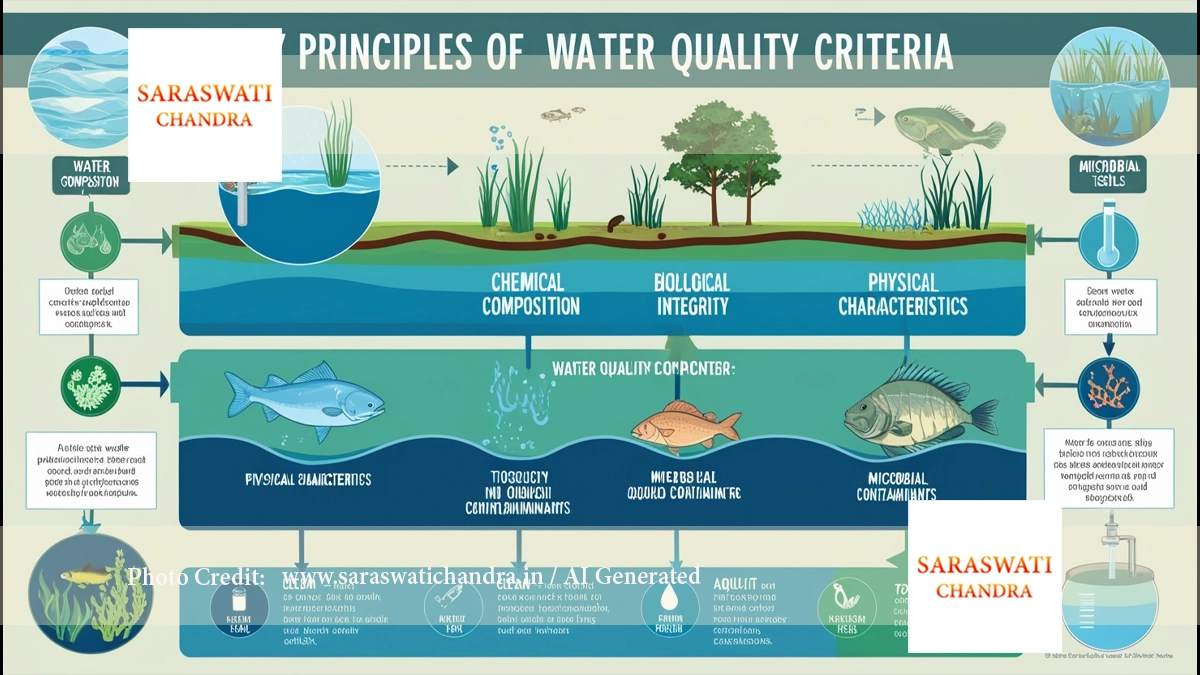Principles of Water Quality Criteria: An Essential Guide
Water quality is fundamental to both human health and environmental sustainability. Understanding the principles of water quality criteria is crucial for ensuring that our water resources remain safe and clean. This article delves into the core concepts of water quality criteria, the factors influencing water safety, and the standards established to maintain water integrity.
What Are Water Quality Criteria?
Water quality criteria are a set of standards and guidelines designed to assess the health of water bodies, ensuring they are safe for aquatic life, human consumption, and recreational activities. These criteria are based on scientific research and environmental standards to protect both public health and ecosystems.
Key Principles of Water Quality Criteria
- Chemical Composition
Water quality is heavily influenced by its chemical composition, including dissolved oxygen, pH levels, heavy metals, and pollutants. Monitoring these elements ensures the safety of drinking water and preserves aquatic life. For example, high concentrations of arsenic or mercury can be toxic to both humans and wildlife. - Biological Integrity
Biological integrity is another cornerstone of water quality. It refers to the presence of a balanced, sustainable ecosystem within water bodies. This includes monitoring the diversity and abundance of microorganisms, algae, and fish species. A healthy aquatic ecosystem indicates good water quality. - Physical Characteristics
Physical factors such as temperature, turbidity, and the presence of suspended particles also play a significant role in determining water quality. High turbidity can block sunlight from reaching aquatic plants, affecting the entire ecosystem. Additionally, extreme temperature changes can stress aquatic organisms, disrupting their life cycles. - Toxicity Levels
Water bodies must be regularly tested for toxic substances such as pesticides, herbicides, and industrial chemicals. These substances can have devastating effects on both human and ecological health, and their presence often exceeds acceptable limits, leading to contamination. - Microbial Contaminants
The presence of harmful microorganisms like bacteria, viruses, and protozoa is one of the most critical factors in determining water quality. Regular testing for pathogens such as E. coli helps prevent waterborne diseases, especially in areas where water is used for drinking or recreation.
Establishing Water Quality Standards
Water quality criteria are defined through a combination of research, environmental monitoring, and legal regulations. Different organizations, such as the Environmental Protection Agency (EPA) and World Health Organization (WHO), set specific water quality standards, which vary depending on the intended use of the water.
- Drinking Water Standards
Drinking water must meet rigorous standards to ensure it is safe for consumption. These standards are based on allowable concentrations of chemicals, pathogens, and other contaminants. Countries set their own drinking water regulations based on international guidelines. - Recreational Water Standards
Recreational water bodies, such as lakes and rivers used for swimming, are tested for bacterial contamination, turbidity, and toxins. These standards are crucial for ensuring public safety and preventing waterborne diseases from spreading. - Aquatic Life Protection
Water bodies that support aquatic life, such as rivers and wetlands, must meet criteria that protect species diversity and habitat quality. Water temperature, dissolved oxygen, and pollutant levels are carefully monitored to ensure these ecosystems remain viable.
Importance of Water Quality Criteria
- Human Health Protection
The primary goal of water quality criteria is to safeguard human health by preventing exposure to harmful chemicals, pathogens, and pollutants. Clean drinking water is essential for preventing diseases and supporting overall well-being. - Environmental Sustainability
Maintaining high water quality is vital for preserving biodiversity. Polluted water can harm aquatic species, disrupt food chains, and damage ecosystems. Healthy water bodies contribute to the balance of nature, supporting plants, animals, and even global climate stability. - Public Awareness
Understanding water quality criteria also plays a significant role in public education. Communities that are informed about the importance of water quality can take steps to reduce pollution, protect water sources, and advocate for stronger environmental policies.
Conclusion
Water quality criteria are essential for maintaining the safety of water resources for both human and environmental health. By adhering to these principles, societies can ensure that our water remains clean, sustainable, and free from harmful contaminants. Regular monitoring and adherence to established standards protect ecosystems, enhance public health, and support long-term sustainability.
By focusing on key principles such as chemical composition, biological integrity, and microbial contaminants, we can create healthier water bodies for the future. It’s crucial for industries, governments, and individuals to work together to preserve the quality of water for generations to come.
